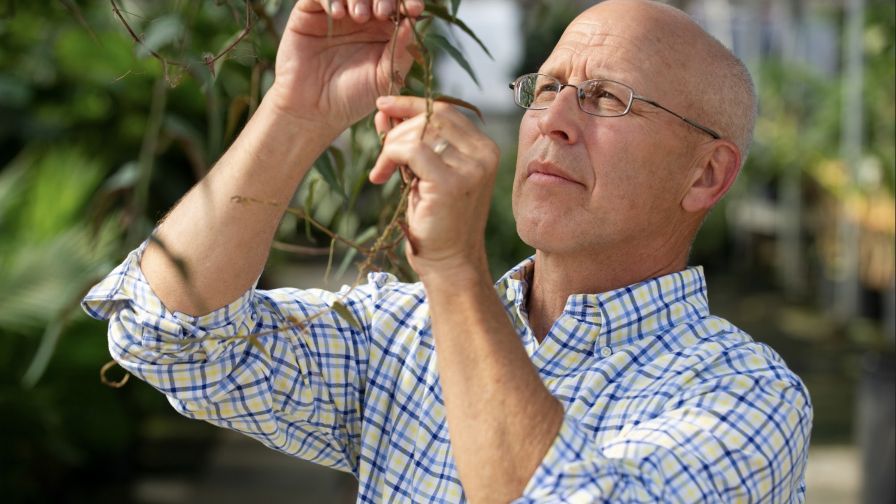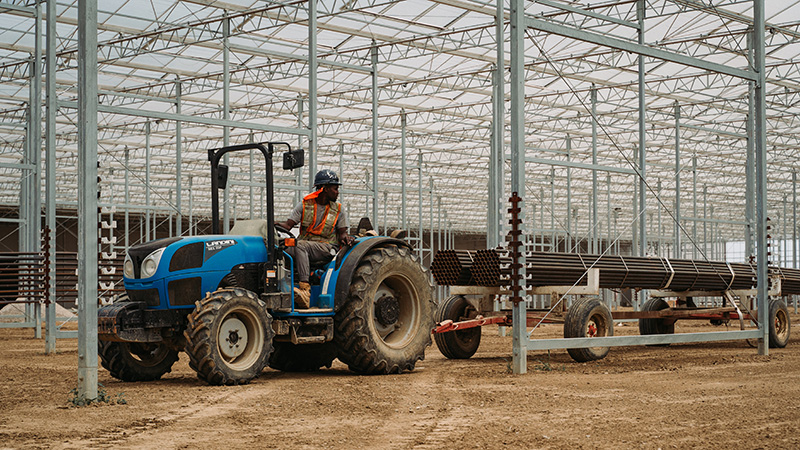Best Practices to Follow When Using Biocontrols in the Greenhouse

Diligent scouting is more critical now than ever, says Jim Black, Business Director at Certis Biologicals Photo: Certis Biologicals
Biologicals are rather new to the horticulture market. Some growers have made them a critical piece of their integrated pest management (IPM) programs, while others have not yet dipped their toes into this realm of pest and disease control.
Just like any other input, biosolutions bring their own set of challenges, ranging from sourcing to scouting. Growers gather some knowledge just by using biocontrols, but some knowledge in advance can help ease pain points. Greenhouse Grower reached out to biologicals suppliers to gather advice for new users. (Check out more information on biosolutions here.)
Greenhouse Grower: What should growers prepare for regarding purchasing and using biologicals? (For example, pricing, supply, scouting, etc.)
Certis Biologicals (Jim Black, Business Director)
While we are seeing promising relief in logistics, there are still challenges in sourcing the natural materials that make up our products and the products that we distribute for our partner manufacturers. Anticipating these challenges, growers should plan ahead as much as possible to ensure that they have the products they need on-hand when they need them. At Certis Biologicals, we advise that proper and diligent scouting in controlled-environment agriculture is more critical than ever now. Growers should keep a close eye on their crops so that they can identify pest and disease issues early. This practice will allow them to source biosolutions early for maximum lead times.
When planning ahead for costs this year, we realize that growers, unfortunately, have already experienced higher prices for inputs. While inflationary pressures are greater than we have seen in some time, Certis Biologicals is making critical decisions to lessen the impact of higher cost on product prices.
DPH Biologicals (Alex Cochran, Chief Technology Officer)
Growers should be prepared for continued high input prices as the supply chain has yet to recover from the multiple shocks of 2022. New product advancements may be expensive.
However, growers should also start seeing price parity amongst established product sectors as the marketplace matures and companies scale their production levels. In 2022, DPH scaled up production of our signature SP-1 formula to meet demands from the turf, ornamental, greenhouse, and row crop sectors, and we are well-poised to meet the needs of 2023.
BioWorks (Bill Foster, CEO)
From our perspective, there are opportunities to help growers gain confidence in using available biological products to move away from other control options that are harmful or more difficult to use due to application or increased regulatory restrictions. This means more flexibility and additional options to avoid supply chain and cost challenges.
Groundwork BioAg (Dr. Yossi Kofman, Co-founder and CEO)
Generally speaking, biologicals take their cue from the fertilizer market; currently, fertilizer production and shipping prices continue to be high. Nonetheless, market analysts predict the long-term outlook for biologicals prices is good, pointing toward market consolidation and higher production efficiencies that will eventually drive down prices. Many greenhouse growers switched to biologicals this past year due in part to price and availability of fertilizers. Now is a great time to try biologicals to see the benefits for yourself.
Locus (Rodrigo Bermudez, Director of the West and LATAM regions)
Growers will continue to see a variety of biological product options available. It will be important for them to understand how to evaluate the differences between biologicals, and teach them the questions they should ask to find the best option for their crops. For example, some key points that all growers should know about biologicals are that:
The strains used in biologicals matter, and not every strain works on every crop. The microorganisms used in a certain product may not be the best option for a specific crop or growing region. Multiple living organisms within the same product can also compete with one another for survival — causing compatibility issues. This leaves perhaps one or two dominant strains alive, resulting in drastically lowered efficacy and a high price that won’t provide the anticipated grower ROI.
CFU (colony forming unit) counts are important. Some biologicals may include well-known organisms, but at low populations or a low CFU count. Buyers should understand that CFU is calculated according to the power of ten. As the CFU count decreases, this can make a product 100, 1,000, or 10,000 times less powerful or effective than a product with a tested, verified CFU count.
Locus AG’s biological products use very specific, novel microorganisms with proven success and extensive compatibility testing. The strains are strategically selected based on high viability and their beneficial biological activities related to specific crop types to ensure a program that provides maximum efficacy.
At Locus AG, we understand the organism down to the genetics for careful strain selection that optimizes results. In addition, we calculate the CFU count for inclusion in our products based on microbiological studies and the outcome of field trials. Each product or container’s CFU count is verified under our quality control process prior to that shipment leaving our facilities.
AgBiome (Kelly Liberator, Director of Technical Service)
Greenhouse growers should prepare for continued fungicide resistance development and the move toward more ecologically sustainable solutions. The industry needs to keep all of the tools available to control damaging diseases and pests, which will require diversifying the types of products that are used.










